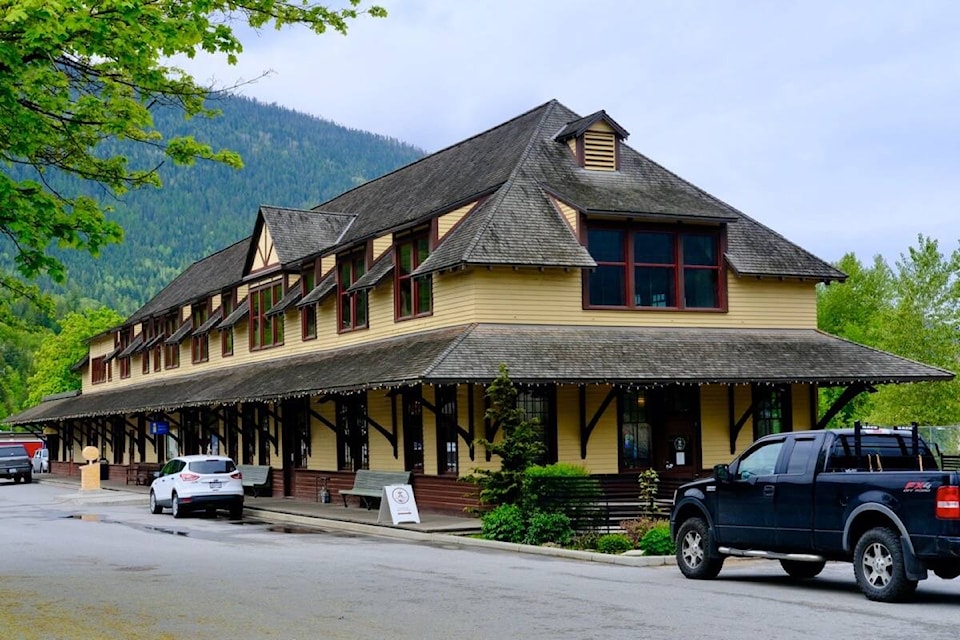If the owner of a heritage home in a residential area of Nelson wants to demolish it and build a square box to replace it, this is allowed.
The design of the new house is up to the builder as long as it complies with Nelson’s zoning bylaw. It does not have to look “heritage.”
Nelson city planner Rhiannon Barbour knows that heritage rules can be divisive.
“I’ve heard a lot about people worrying that if their house gets designated (as heritage), they won’t be able to change a lightbulb without permission,” she says.
There are other ways of recognizing the heritage importance of a place without making changes overly difficult for regular homeowners, she says, including Heritage Conservation Areas, which can control the materials and look of new buildings and additions to make sure they fit in with the streetscape, without adding significant cost to homeowners.
In certain downtown parts of the city, for commercial buildings, there are guidelines about such things as windows, awnings and building design.
In both residential and commercial areas, there are many questions about how the city should define heritage and how heritage should be preserved.
With these questions in mind, Nelson City Council in 2019 commissioned a heritage master plan, and approved the finished product at its May 3 meeting.
Entitled Our Culture and City, the document was written by Whistler-based consultant Denise Cooke Design and funded by the Columbia Basin Trust through Heritage B.C. The plan can be found at https://bit.ly/3wLKKfK.
The report is actually a toolbox. It does not prescribe anything, but offers a number of suggestions and best practices. The city now intends to consult the public during the coming year about the contents of the plan, which is intended to be a conversation-starter, says Barbour.
“It gives us the opportunity to have a conversation as a community about what we value and how heritage can be more inclusive of different perspectives,” she says.
Our Culture and City contains a survey of the heritage characteristics of different neighbourhoods of Nelson, a set of suggestions on how to decide what should be preserved, and a list of best practices.
One current best practice, according to Barbour, is to avoid what she calls “faux-heritage.” She says “new buildings and extensions should be sympathetic with the surrounding heritage environment, but should also be distinctive as new additions.”
Five priorities
The document identifies five things that should be done right away.
1. Enact a heritage procedures bylaw to formalize the city’s heritage approach and procedures. In other words, what is heritage deserving of conservation, and how is this decided, and what preservation methods should be used?
The report also suggests that all issues and decisions that come before council should be looked at through a heritage lens, as is the case now with environmental sustainability.
2. Prepare a historical neighbourhood context statement for each of Nelson’s distinct neighbourhoods – an explanation of why each neighbourhood is historically and culturally unique.
3. Integrate heritage into the city’s directional signs and way-finding program.
4. Retain the character of lower Uphill found in its properties and streetscapes. This item stands out because it is specifically about preservation of buildings and streets in the area with the most heritage houses. Perhaps most residents want to preserve these houses and streets. But how? What bylaws, rules or incentives are needed? That is the question council is faced with now that it has adopted this plan.
5. Design and launch a heritage page on the city’s website.
What are the current rules?
In the downtown and waterfront commercial areas, such things as materials, window treatments, types of awnings, and signage are regulated through the city’s Official Community Plan. City planning staff works with builders to make sure the building components and design are compatible with nearby heritage buildings.
Specific properties – residential, commercial and institutional – are listed in the Community Heritage Register, which contains 220 locations, more than any community in the province outside Vancouver or Victoria.
dd
“This register allows us to temporarily withhold demolition permits,” says Barbour, “and is a way of recognizing the heritage value of a place.
“However, this register doesn’t allow us to control the design of renovations, or make sure nearby development is sympathetic with existing buildings, or prevent a building from being demolished.”
More formal protection is given to 12 specific buildings on the register through a heritage designation bylaw.
“This is what most people think of when they hear the term ‘heritage protection,’” says Barbour.
Those 12 buildings are: 91 Baker St. – Canadian Pacific Railway Station/Station Master House; 516 Hall St. – Malone Manor; 810 Hendryx St. – Hochelaga; 602 Kootenay St. – Trinity Presbyterian Church; 420 Railway St. – CPR District Superintendent’s House; 610 Railway St. – Nelson Coke and Gas Works; 616 Railway St. – Gasworks Building; 702 Stanley St. – Evangelical Covenant Church; 202 Vernon St. – Yellow Deli; 606 Victoria St. – Kootenay School of the Arts; 701 Ward St. – Saint Saviour’s Pro-Cathedral.
What does the new plan suggest?
The master plan lists regulatory tools that Nelson could implement, such as design guidelines, development permit areas, zoning bylaws, building permits, sign bylaws, and withholding demolition permits. These are all techniques known to heritage planners and proven in other municipalities.
The plan lists a number of possible heritage conservation tools including heritage revitalization agreements, tax exemption programs, heritage inventories, community heritage registers, and heritage designation.
At the May 3 meeting, city manager Kevin Cormack emphasized that the master plan is not a policy document.
”It does not prescribe anything – it does not say you have to build this way or that. Instead it sets up a foundation for policies the city might develop in the future. It asks the city to look at its decisions and policies through a heritage lens, as the city already does with environmental sustainability, wildfire safety, and climate change.”
bill.metcalfe@nelsonstar.com
Like us on Facebook and follow us on Twitter
